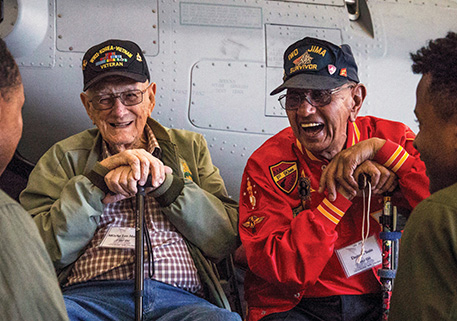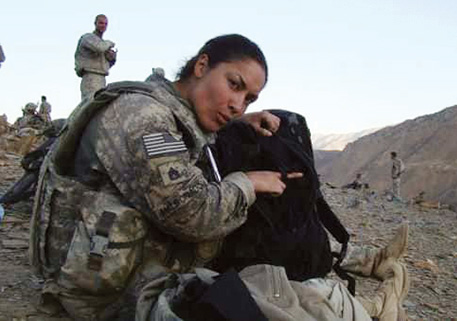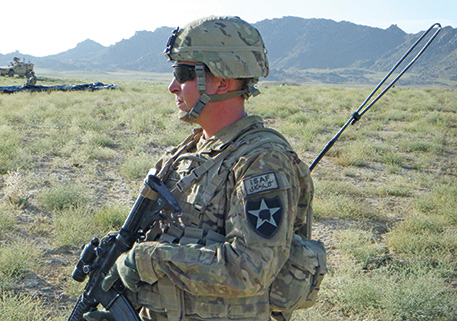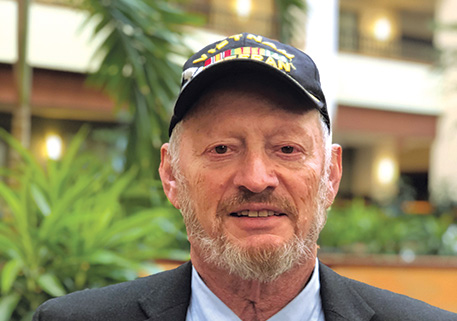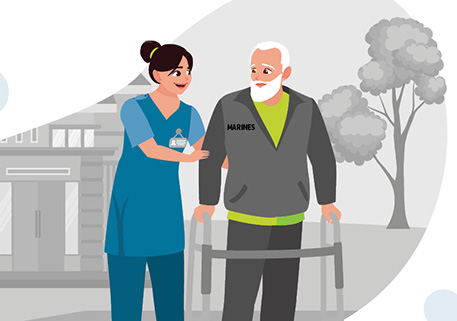How DAV is changing the way we view benefits for burn pit-related disabilities
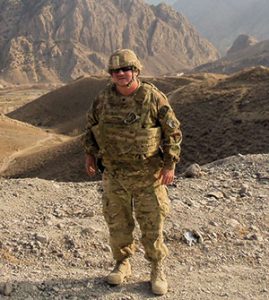
When Michael Hert sat in on a panel with other post-9/11 veterans to discuss the effects of toxic exposure, he thought the only thing they all had in common was the decision to wear the uniform of service. However, what Hert discovered is that the similarities they truly shared were beneath the skin. Many had symptoms of toxic exposure brought on by their time spent serving near open-air burn pits.
Hert began his 31-year military career under President Ronald Reagan. After the attacks on 9/11, he served as a civil affairs officer, including five overseas tours—two deployments to Iraq, one to Afghanistan and his final two to the Horn of Africa. This service placed Hert in proximity of 15 burn pit-eligible locations, recognized by the Department of Veterans Affairs, in the span of nine years.
At 63, Hert has seen the lingering health effects his Vietnam veteran predecessors have had from their exposure to Agent Orange and the denial of service connection they received for certain medical conditions despite overwhelming scientific evidence of an association between their exposure to Agent Orange and known health effects.
“We’ve seen what happened with Agent Orange,” said Hert, who is a past commander of the DAV Department of Wisconsin. “Then when I look at myself having had 15 different opportunities to be in a Burn Pit Registry-eligible location, it’s scary.”
The long shadow cast by Agent Orange was on the minds of DAV leaders and members when they were the first to raise the issue through journalists and constant, ongoing legislative efforts. DAV then initiated the pilot for the Burn Pit Registry, and the battle began.
Among those in the fight from the early days alongside DAV was Jill Wilkins, a DAV Auxiliary member, who has now spent years seeking answers after her husband, Kevin, an Army nurse who served at Balad Air Base, Iraq, was diagnosed with brain cancer and died just five days later.
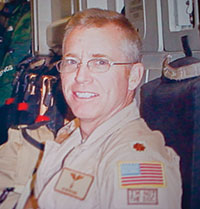

“You just go from him being here and everything’s great … then he’s gone,” said Wilkins. “He had two weeks’ vacation coming. We had some money saved, but I didn’t take time from my job because I thought ‘I’m going to have to work a lot.’”
These stories have become all too common for Deputy National Legislative Director Shane Liermann, who has been working with legislators in Washington, D.C., to find an accessible and clear path for veterans exposed to toxins to gain the benefits they deserve.
However, in the search for a way to pass legislation for presumption of exposure to toxins from burn pits, as Congress was able to do for Vietnam veterans exposed to Agent Orange, Liermann and his colleagues ran into issues surrounding the science.
“When I began working on this issue several years ago, we had only a study in 2011 to go off of,” said Liermann. “The study was inconclusive in connecting veterans’ health symptoms and diseases to their time serving near burn pits. So we knew that the science and studies needed to establish presumptive medical conditions based on exposure to toxins emitted from burn pits was going to take too long to try to prove.”
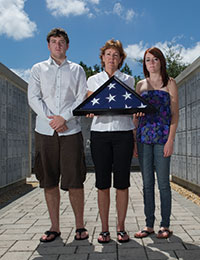

The reasoning behind the study’s decision was the number of variables that could have caused the effects of the exposure. When studies were able to show the symptoms of toxic exposure in Vietnam directly correlated to Agent Orange, scientists could point to the exact cause of the effects. With burn pits, however, the length of exposure at different sites could differ and numerous substances could be mixed at any time and vary widely between composition, making it difficult to determine the exact cause of veterans’ reported symptoms and diseases.
“It’s not that Congress doesn’t want to do the right thing for veterans,” said Liermann, “but it’s much harder to authorize benefits without the science behind it—that’s not responsible legislation. However, what they can do is pass the Veterans Burn Pits Exposure Recognition Act, legislation that would concede exposure to airborne hazards and toxins from burn pits and allow veterans to file for direct service connection. It’s not a guarantee, but veterans aren’t going to have to wait for science and presumptive conditions to be established.”
This bill already has bipartisan support in the Senate, and if reintroduced to the 117th Congress, it would allow all veterans who served in the designated parts of the world where burn pits were used to receive an examination by the VA.
“It’s a foot in the door,” said Liermann, adding that passage of the act may be all it takes to help save thousands of lives and provide benefits these men and women need and deserve.
Veterans exposed to burn pits would benefit from DAV’s leadership on this issue, according to Hert.
“We don’t have to repeat what happened with Agent Orange. DAV is working with veterans and elected officials to promote awareness—and understanding— around toxic exposure,” he said. “Because of the great leadership team at DAV at the national level and the legislative team we have in Washington, working in conjunction with DAV departments and local chapters, I think we’re going to have a real impact.
“There’s nothing better than an educated DAV chapter member going to a town hall meeting or meeting individually or as a group with local elected officials that are on the federal level and talking with them about this subject and making a connection with them,” he added.
As for the families, the bill would alleviate many of the financial and medical worries they face.
“That would be huge,” said Wilkins. “I basically started from scratch. With something like this, it would make someone not have to go through the frustration and the stress of trying to figure out what their next step is going forward.”


